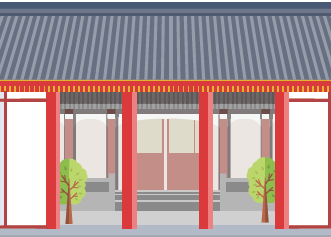REFURBISHMENT INSTEAD OF DEMOLITION
In the suburban neighbourhood of Midorigaoka, which is about an hour by train outside Kobe, all the houses were built by the same company in the same factory. Daiwa House, one of the biggest prefabricated housing manufacturers in Japan, built this town in the ‘60s during a post-war housing trade which was going up at that time.
Unlike in other countries, Japanese homes gradually decrease in value over time, becoming completely valueless within 20 or 30 years. When someone moves out of a home or dies, the house, unlike the land it sits on, has no resale value and is typically demolished. In Midorigaoka, even the newer homes built in the ‘80s and ‘90s are nearing the end of their expected lifespan.
However, down at the end of one block, there’s a sign things are changing. Scaffolding surrounds a vacant house on a corner and workers from Daiwa House are clanging away inside. They’re not demolishing the house but refurbishing it – reorganising the floor plan, knocking down walls, opening up the kitchen and enhancing the insulation. Rather than tear down the house so the next buyer can build something new, they’re rebuilding it from the inside and putting it back on the market.
It’s also an ageing society, and within 20 years over a third of its inhabitants will be 65 or older. As the population shrinks and ages, it is also concentrating into metropolitan areas, leaving millions of suburban and rural homes vacant.
Like Daiwa House, many other big housing manufacturers are getting into the refurbishing business. The first floor is furnished like a typical home built in the ‘80s: A traditional tatami mat sitting room in the old layout becomes a media room, with a low couch and a flat-screen television.
For the company, these simple renovations can turn a vacant home into a new sale. ‘Nowadays young people don’t have much money, so they won’t hesitate to buy older buildings,’ says Kenichi Ishida, a managing officer at Sekisui House.
(Adapted from Guardian Website)

